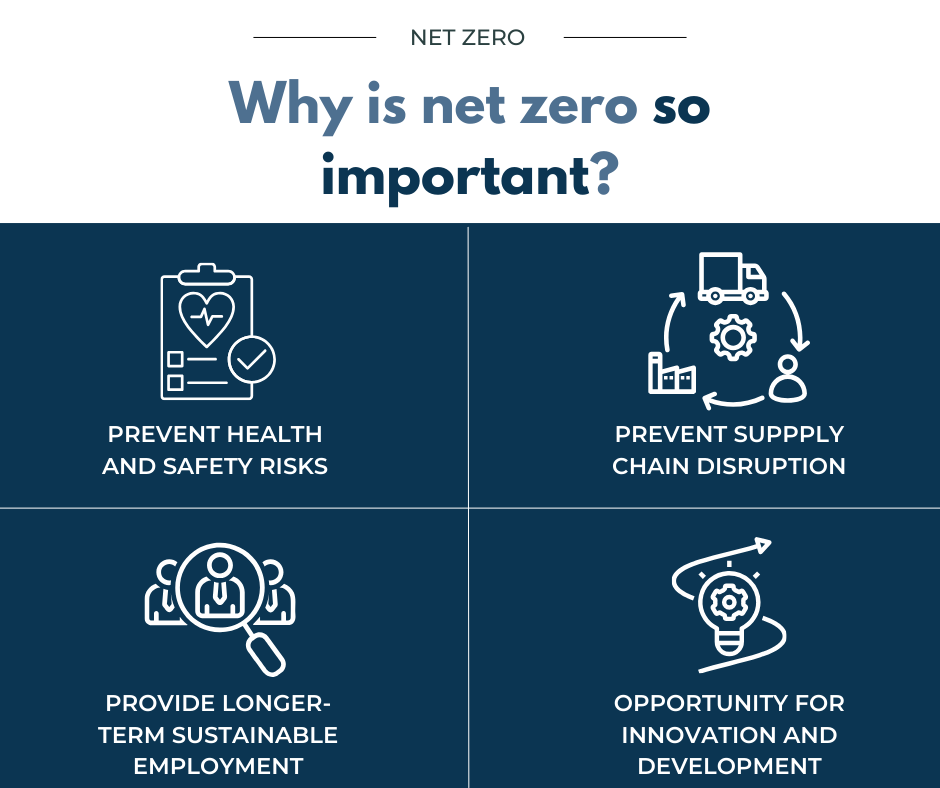In research by British Business Bank, small businesses were found to be responsible for 30% of all UK greenhouse gas emissions – despite this, a study by the British Chambers of Commerce found that only on in ten businesses surveyed are actually measuring their emissions.
Keep reading to learn more about steps you can take when aiming for net zero.
1. Implementing a carbon policy
 A policy covering the actions required in order to achieve net zero will give your business a framework on which to base your approach.
A policy covering the actions required in order to achieve net zero will give your business a framework on which to base your approach.
Your policy should also define the different scopes used to measure and assess greenhouse gas emissions.
2. Tracking mileage CO2 emissions
See how much your business mileage contributes to the company’s CO2 emissions, and use this information to investigate other transportation options (e.g. EV cars, trains, etc.).
3. Monitoring overall CO2 production
By tracking CO2 production via gas, electricity, and other means by your business, you can pinpoint areas for improvement and create an action plan to tackle these.
4. Implementing a net zero management plan
 Once you have identified the actions you need to carry out, a comprehensive net zero management plan should be created and implemented.
Once you have identified the actions you need to carry out, a comprehensive net zero management plan should be created and implemented.
This should include:
- Actions to be taken
- Timeframes for delivery
- Responsibility assignments
- Details of current emissions
5. Understanding tendering and SSIP requirements
The majority of tenders and SSIP applications now include environmental sections – in order to ensure that you can pass these sections, you should know what kind of information they are looking for so that you can include this in your management plan.
Many companies will need to know the emissions produced by their providers in order to report their Scope 3 emissions.
6. Adopting a management system
One way to ensure that you have the proper processes in place to manage your environmental impacts, including your CO2 emissions, is to implement an ISO 14001 management system.
ISO 14001 is the most widely recognised standard management system for improving environmental performance.
7. Implementing a carbon reduction plan
 Per the government Procurement Policy Note 06/21, a carbon reduction plan must be submitted on any work with a contract value above £5million. This will often include:
Per the government Procurement Policy Note 06/21, a carbon reduction plan must be submitted on any work with a contract value above £5million. This will often include:
- A commitment to achieving Net Zero by 2050
- Baseline and any current Scope 1, 2 and 3 emissions reports
- A description of emission reduction targets
- An assessment of carbon reduction projects, including completed and future initiatives
8. Updating your travel policy
Transport is responsible for around a fifth of global CO2 emissions – so looking at your current travel policy should be a priority.
Policies should encourage employees to use public transport or carshare where possible, and including initiatives such as a Cycle to Work or electric vehicle scheme would be hugely beneficial.
9. Looking at your company’s digital footprint
 Research conducted by OVO Energy in 2019 calculated that the UK could reduce its carbon output by 16,433 tonnes a year if everyone sent just one less email a day!
Research conducted by OVO Energy in 2019 calculated that the UK could reduce its carbon output by 16,433 tonnes a year if everyone sent just one less email a day!
Encourage your staff to be mindful of copying in people to email threads that are not relevant to them, and look into using file transfer sites over sending attachments via email.
10. Incorporating social elements
Introducing social events and initiatives that support your formal policies can help you to engage your employees with your net zero goals.
Include a competitive element such a leader board for sustainable travel to work, or use your built-in network to swap clothes and household goods to keep them out of landfill.

Environmental Awareness and Resource Efficiency courses can help your workforce gain an understanding of how they can reduce their environmental impact. Make sure you don’t miss out on our 10% off deal on these courses, available until the end of June. Simply enter the code ‘enviro10’ at checkout to save!
Read more Top 10 Tips blogs here.
To keep up to date with the latest health & safety news and advice, follow us on social media:
